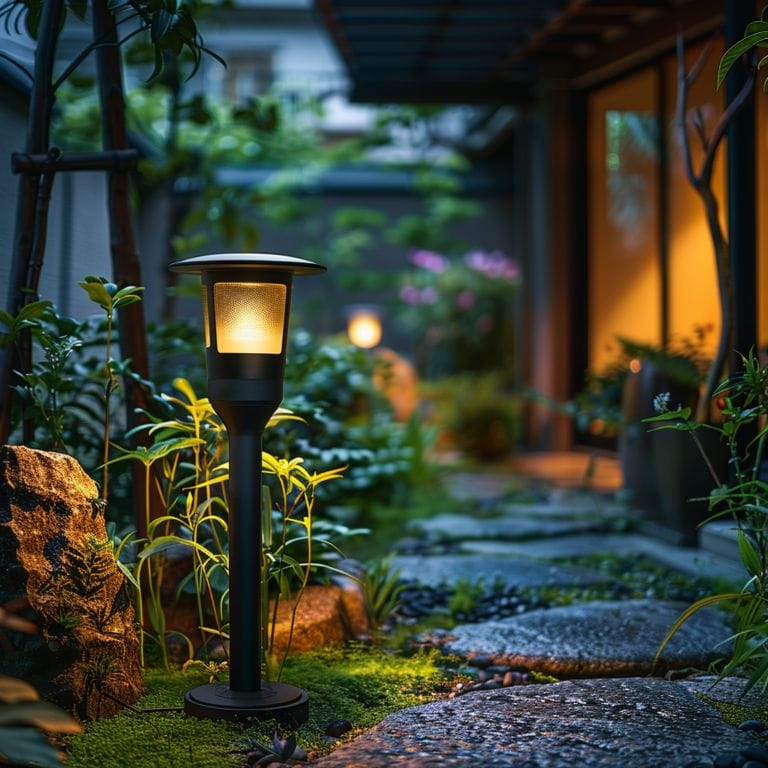What Resistor to Use With LED 5v? Essential Tips Explained
When we’re working with a 5V LED, selecting the right resistor is crucial to guarantee the LED’s longevity and avoid burning it out. We need to take into account the forward voltage of the LED and the desired current to calculate the correct resistor value. Typically, a 150 ohm resistor is recommended for a 5V supply, but there are other factors to take into consideration. These factors include resistor type, tolerance, and power rating, all of which play a role in the overall performance and durability of our LED setup.
So, how do we make the best choice? Let’s explore.
Key Takeaways
- Use Ohm’s Law to calculate the resistor value needed for a 5V LED.
- A 150 ohm resistor is typically required for a 5V LED.
- Select a 1/4 watt resistor to prevent overheating.
- Ensure the resistor has a tolerance of ±5% for adequate precision.
- Connect the resistor in series with the LED’s positive leg.
Understanding the Basics of Resistors and LEDs

Resistors limit the flow of electrical current in electronic circuits, protecting sensitive components like LEDs from potential damage caused by excessive current flow. LEDs, or Light Emitting Diodes, are semiconductor devices that convert electrical energy into light. They operate efficiently at low voltages and currents but can get damaged if exposed to currents beyond their rated capacity. That’s where resistors come into play.
Without a resistor, an LED connected directly to a power source might draw too much current, leading to overheating, reduced lifespan, or immediate failure. Using a resistor ensures that the current remains within safe limits, protecting the LED and optimizing its performance.
Calculating the Required Resistance for a 5V LED

To calculate the required resistance for a 5V LED, we use Ohm’s Law, which states that voltage (V) equals current (I) times resistance (R). First, we need to know the LED’s forward voltage (usually about 2V) and the desired current (typically 20mA or 0.02A). The remaining voltage that the resistor must drop is the difference between the supply voltage and the LED’s forward voltage, which for a 5V supply is:
V_resistor = V_supply – V_LED = 5V – 2V = 3V
Using Ohm’s Law (R = V/I), we then calculate the resistor value:
R = V_resistor / I = 3V / 0.02A = 150 ohms
This means that for a 5V LED, we need a 150-ohm resistor.
Choosing the Right Resistor for a 5V LED

When selecting the right resistor for a 5V LED, consider the resistor’s type, tolerance, and power rating. Carbon film resistors are commonly used due to their reliability and cost-effectiveness, while metal film resistors offer better precision and stability.
Resistor tolerance indicates how much the actual resistance can vary from the stated value. For a 5V LED setup, a tolerance of ±5% is usually sufficient, although high-precision circuits might require resistors with a ±1% tolerance.
Finally, the power rating of the resistor is crucial. The power is calculated using the formula P = V^2 / R, where V is the voltage (5V) and R is the resistance in ohms. The chosen resistor must be able to handle the calculated power without overheating. A 1/4 watt resistor is typically adequate for most LED applications.
Practical Tips for Connecting a Resistor to a 5V LED

After choosing the right resistor, let’s look at how to connect it to a 5V LED. Identify the LED’s longer leg (the positive or anode side) and the shorter leg (the negative or cathode side). Connect the positive leg of the LED to one end of the resistor, then connect the free end of the resistor to the positive terminal of the 5V power source. The negative leg of the LED should be connected to the negative terminal of the power supply.
If the LED doesn’t light up, check the connections and confirm the resistor value. Reversing the LED’s polarity can also prevent it from working.
Advanced Concepts Related to Resistors and 5V LEDs

In series circuits, the same current flows through each component, with the 5V supply divided among the LEDs and resistors. This ensures uniform brightness but increases the total voltage requirement. On the other hand, parallel circuits allow multiple paths for current, with each LED receiving the full 5V. This maintains consistent brightness even if one LED fails.
Understanding power ratings is crucial when selecting resistors. The power rating determines how much energy a resistor can safely dissipate without overheating. For a 5V LED circuit, calculating the required power rating involves knowing the current and resistance.
For adjustable brightness, consider using a potentiometer to provide variable resistance. This allows control over the current flowing through the LEDs, offering dynamic lighting effects.
Conclusion
To sum up, when we’re working with a 5V LED, selecting the right resistor is essential for safety and longevity. By understanding the basics, doing the necessary calculations, and considering factors like resistor type and tolerance, we can guarantee our LED setup works efficiently.
Remember, using a 150 ohm resistor is a good starting point. With these tips, we’ll have a reliable and long-lasting LED system. Happy tinkering!
Frequently Asked Questions
What resistor do I need to use with a 5v LED?
To calculate the resistor needed for a 5v LED, you can use Ohm’s Law. You’ll need the LED voltage (often mentioned in the datasheet), the voltage of your power source (in this case, 5v), and the desired LED current.
How do I determine the LED voltage from a datasheet?
The LED voltage can usually be found in the datasheet provided by the manufacturer. Look for specifications related to forward voltage (VF) or voltage drop across the LED when calculating the resistor value.
Can I use a resistor without calculating the value?
While it’s possible to use a general value resistor for an LED with a specific voltage and current, it’s best to calculate the exact value to ensure proper current flow and prevent damage to the LED.
What are the risks of not using a resistor with an LED?
Without a resistor, the LED can draw too much current, overheat, and burn out quickly. Using a resistor helps limit the current flow, protecting the LED and ensuring longevity.
How does the current rating of the LED impact resistor selection?
The LED’s current rating is crucial in determining the resistor value to ensure the LED receives the correct current. A mismatch in current can damage the LED or make it dimmer than desired.







